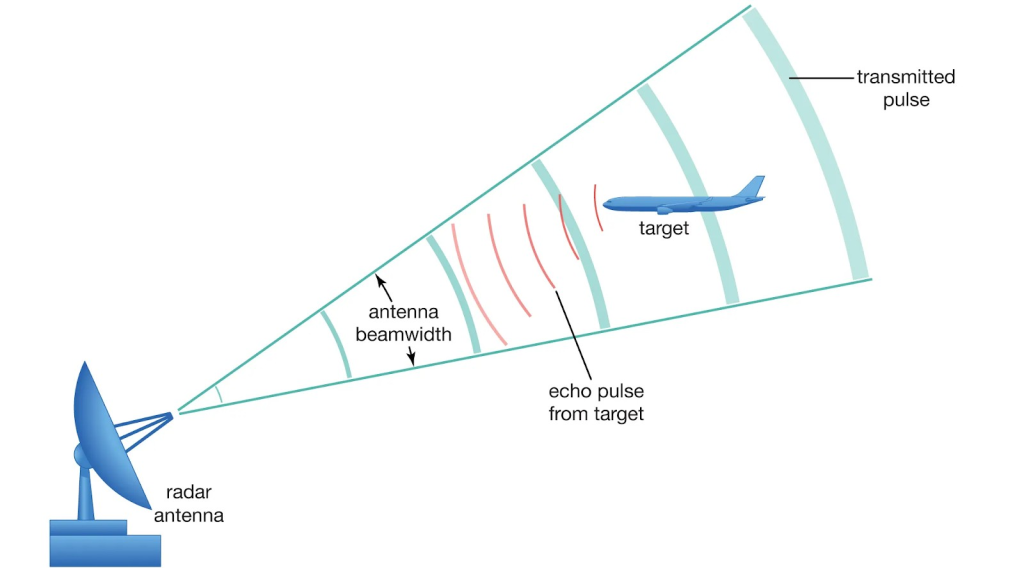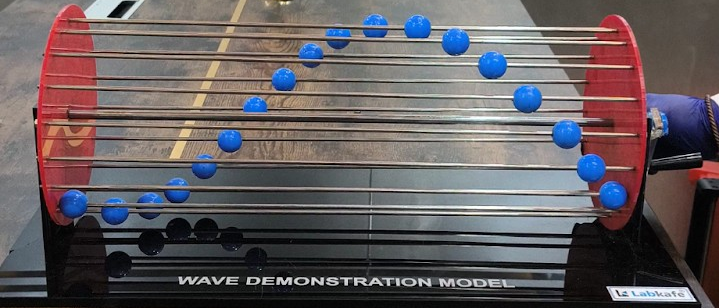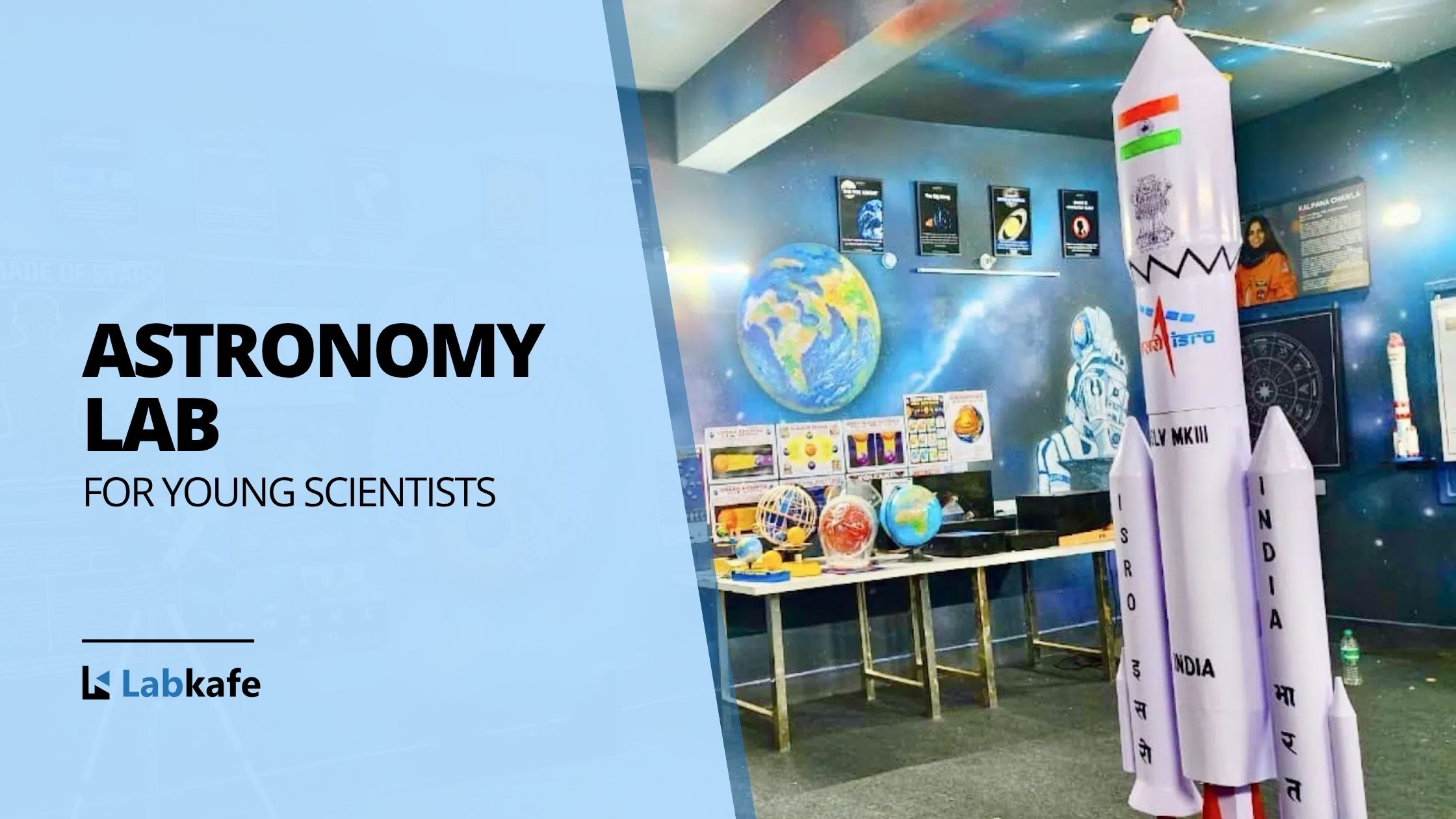Waves aren’t always visible. When you drop a pebble in water, it may look like the water is flowing outward, but that’s not the case. To understand what’s happening, you need to understand waves. If you place a cork in the water and drop a pebble nearby, you’ll see the cork bobbing up and down. This shows that water particles move vertically, not outward from the pebble. Here, the waves might seem to spread outward, but in reality, they move up and down. It’s no wonder waves aren’t easy to see! Unique demonstration kits like these make wave motion easier to grasp, turning abstract concepts into hands-on learning!
Transfer of energy in wave motion
Waves are, at their core, carriers of information. Wave motion transfers information from one point to another—a concept we use in everyday life. For instance, speech is a form of sound wave that lets us communicate. Even early telegrams converted sound into electrical signals to send messages over long distances.

Transverse waves on the surface of water (Source- Everypixel.com)
Certain waves, like light, radio waves, and X-rays, can travel through a vacuum at the speed of light. But not all waves can do this. Mechanical waves, such as sound, ocean waves, and seismic waves, need a medium to move through. They rely on particles in the medium to oscillate and generate the wave motion.
An even more fascinating type of wave is the matter wave, which arises from fundamental particles like electrons, protons, and neutrons. While we may not use them in everyday life, matter waves have groundbreaking applications in modern science. For example, electron microscopes—powered by matter waves—let us see much smaller objects than traditional microscopes can. Regular microscopes can visualize bacteria, but electron microscopes go deeper, even revealing viruses that would otherwise be invisible.
Mechanism of wave motion
In essence, wave motion is like the compression and rarefaction in connected springs. Push one spring, and the other compresses; pull one, and the other extends. This happens because they’re linked—just like air molecules. When one air molecule pushes the next, it sets off a chain reaction where each molecule pushes or pulls on its neighbor. As the wave travels forward, the molecules alternate between compressing and spreading out. This jostling between molecules transfers energy, which is what wave motion really is: molecules passing energy through a chain of pushes and pulls.

Compression and rarefaction in a spring (Source- Physics-SchoolUK)

Compression and rarefaction in a spring (Source- Elephango)
Solids transfer sound in a similar way. When you bang on a desk, the impact pushes its molecules, creating a wave that travels through the solid. This wave then transfers to the air, eventually reaching your ear and causing your eardrums to vibrate, which creates the sensation of sound. In this way, waves are essential for hearing.
When we discussed water particles oscillating perpendicular to the wave’s direction after dropping the pebble, we introduced the concept of a transverse wave. In contrast, when we explored how springs move back and forth—compressing and stretching in a manner similar to the compression and rarefaction of air—we were looking at a longitudinal wave.
These two types of waves illustrate distinct movement patterns: transverse waves have particles that move perpendicular to the direction of energy transfer, while longitudinal waves involve particles moving parallel to the wave’s direction.
Conservation of matter
Waves transfer energy, but it’s essential not to confuse this with the transfer of matter or particles. Although energy moves through the medium, the particles themselves only oscillate in place. As a result, matter remains conserved and does not travel with the wave. When we drop a pebble, its mechanical energy transfers into the surrounding water in the form of a wave. However, unlike an ocean current or stream, where water moves from one place to another, this wave only transfers energy. The water particles themselves oscillate about their positions rather than moving along with the wave.
Components of a wave
We discussed how waves propagate through the oscillation of particles. Oscillation involves the displacement of particles, which alternates between positive and negative directions. This back-and-forth motion allows the wave to carry energy through the medium without permanently shifting the particles’ positions.

Propagation of a transverse wave (Source- The Fact Factor)
In scientific terminology, the crest represents the maximum positive displacement, while the trough represents the point of maximum negative displacement. The magnitude of this displacement, whether positive or negative, is known as amplitude.
Now, how fast do waves travel? Primarily, the speed of a wave depends on the medium through which it propagates and the properties of that medium. In the case of mechanical waves, speed is determined by the medium’s inertial and elastic properties. For instance, in a stretched string, it’s influenced by the string’s linear mass density and tension. For other media, it can depend on properties like Young’s modulus for elasticity in solids or bulk modulus in fluids. Therefore, the medium itself sets the wave speed.
The speed of a wave (𝑣) is given by the formula:
𝑣=𝑓×𝜆 where 𝑓 is the frequency, and 𝜆 is the wavelength.
Characteristics and applications of wave motion
Waves can also undergo reflection when they strike a rigid boundary, similar to how light reflects off surfaces. Additionally, when waves pass from one medium to another, they experience refraction, where part of the wave changes direction, while another part reflects back.
An intriguing phenomenon associated with waves is the Doppler Effect. This occurs when the wave source moves closer to or farther from the observer. When the source approaches, the observer perceives an increase in pitch or frequency, while moving away results in a decrease in pitch and apparent frequency. This effect has practical applications in radar technology for locating aircraft. As the aircraft moves closer to the radar, the detected frequency increases, signaling its approach to air traffic controllers.

Concept of RADAR (Radio Detection and Ranging) (Source- Britannica)
Conclusion
To truly understand wave motion, especially since it’s so abstract, using models to visualize it makes all the difference. Here’s a demonstration model by Labkafe that brings wave concepts to life.

Wave motion demonstration model by Labkafe
Curious? Contact the Lab Experts at Labkafe for a quote today.












Leave a Reply